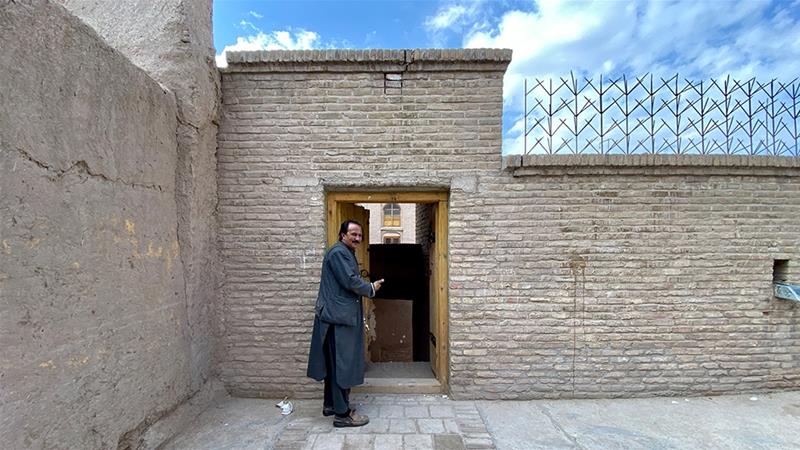Herat, Afghanistan – The narrow road that leads to the Yu Aw synagogue in the ancient city of Herat in western Afghanistan is lined with traditional mud homes that, despite their rough exterior, are fine examples of centuries-old architectural dexterity.
Ghulam Sakhi, the caretaker of some of the heritage sites, leads the way, taking short quick steps and pausing every so often to share an anecdote from the area’s history.
“This is why I wanted you to walk to the synagogue, so you can see the neighbourhood and how it has been changed since the war,” he explained before starting the walk of a little over a kilometre between the old city centre – called Chahar Su, or Four Directions – and the synagogue, which was restored in 2009.
About 350 years old, the Jewish place of worship is located near what used to be known as the Iraq Gate, an area of the city from which travellers and merchants embarked on their journey to Iraq.
The shared Jewish history of the two countries goes further back, to more than 2,700 years ago when Jewish tribes from the present territory of Palestine-Israel exiled by Assyrian conquerors travelled through Iraq to Afghanistan, where they settled and built thriving communities in cities like Herat and the Afghan capital of Kabul.
“The history of Jews in this region goes back to way before the birth of the nation state of Afghanistan,” said Afghan academic Omar Sadr, who has also authored the book Negotiating Cultural Diversity in Afghanistan.
“There are mentions in history of Jews living in this region, during the period of Cyrus the Great, the Persian emperor and his conquest of Babylon in 538. During the Islamic era, Tajik historian Jowzjani from the 7th also mentions of Jewish colonies under the Ghurid chief Amir Banji who had recruited Jews as advisers. In more recent history, in 1736, Persian King Nadir Afshar encouraged Jewish settlement in the region because the Jews had good connection in the merchant routes in the subcontinent- between central Asia, and Arabia,” he explains.
In Herat, this history is more intimate. “This neighbourhood has a deep connection with the Afghan Jewish community; they lived around here, they had shops and businesses. They were butchers, they sold spices and clothes. This is their neighbourhood,” Sakhi narrates, as he unlocks a heavy iron latch on the thick traditional wooden doors.
Read full story on Al Jazeera
